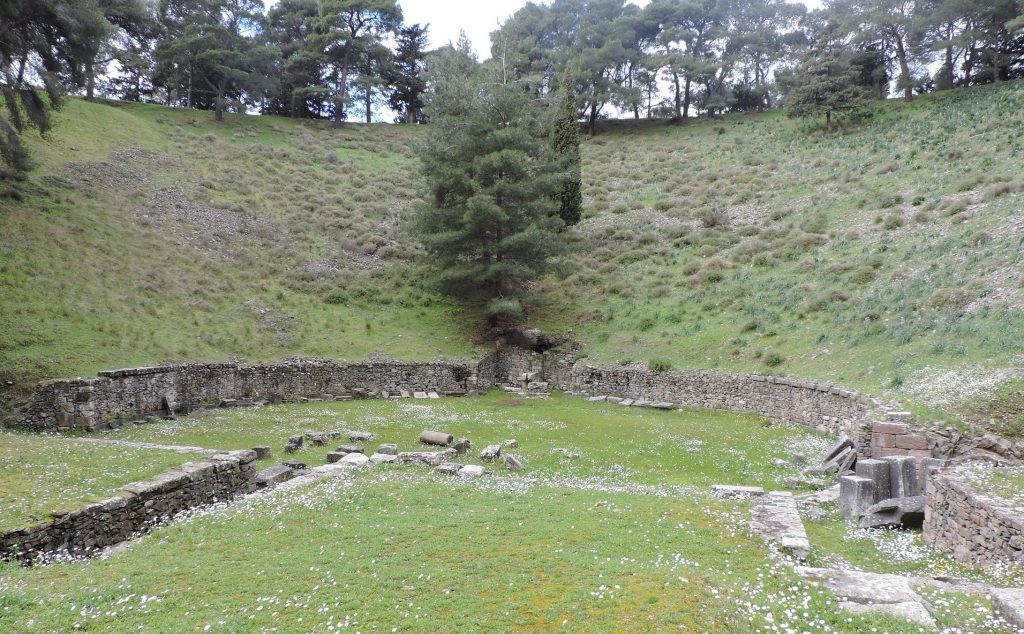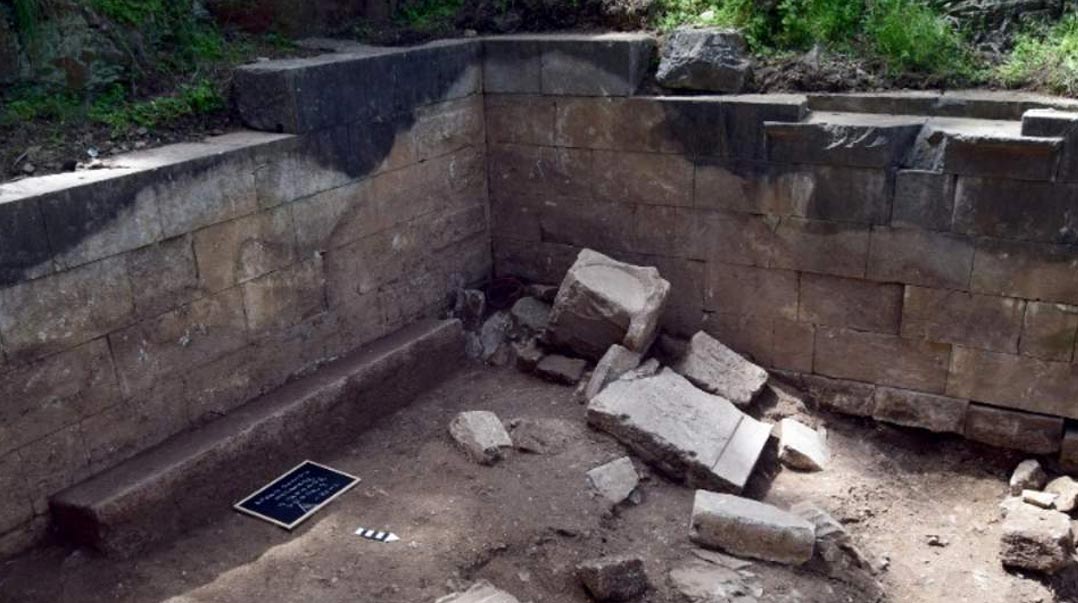A Temple of Nemesis has recently been unearthed under the ruins of an ancient theatre in Mytilene, on the Greek island of Lesbos.
In the ancient Greek and Roman world, Nemesis was the goddess who dealt out retribution against people who exhibited too much foolish pride and over confidence (hubris).
That is why the recent location of the first century CE temple adjoining an ancient theatre may seem at first confusing. But there is a good reason why the two ancient buildings may have been deliberately placed so close together.
The remains of the Temple of Nemesis were located near the south entry of the ancient theatre, covered by several large limestone rocks. The lead excavator at the site, Pavlos Triantafyllides explained that the location of the temple so close to the theatre was not arbitrary. He suggests that given that the theatre would have hosted gladiatorial battles during the first century CE, and each gladiatorial battle would have concluded with the serving of justice and awarding of victory to the best gladiator, the existence of a temple dedicated to Nemesis at the site begins to make sense.
Who was Nemesis?
The goddesses name comes from the ancient Greek word” némein,” which means “to give what is due.” Nemesis’ job in the ancient Greek pantheon was to enact retribution on those who were foolishly proud, overconfident or arrogant and had annoyed the gods. During the Roman period she was known as Invidia – meaning “Jealousy or “Jealous Rivalry”. She was often depicted as a winged goddess bearing a sword, scales and/or an apple branch and was known as the goddess who sought balance. While she was fine with a certain amount of happiness being dealt out to certain people, she was not in favour of anyone getting too much. She was quick to swoop in when anyone was getting an excessive amount – particularly in love which often resulted in loss and suffering.
The Site.
Archaeologists were able to identify the ruins as a temple because of the existence of a large stone alter and a series of dedicatory inscriptions written by priests and other prominent community figures of the period.
The ancient theatre was completed in two phases, first in the Hellenistic period in the third century BCE and then later in the Roman era, the period the temple was made. It was a particularly large venue that could have held as many as 10,000 spectators.
Such a large theatre and adjoining temple would have been a significant site in ancient times. The theatre was a central part of the ancient Greek and Roman world with the theatre at Mytilene holding particular significance. The writer and philosopher Plutach (45-120 CE) mentions the site saying that the “theatre was so important in antiquity that the Roman politician Pompey copied its plans to build one just like in in Rome in 55 BCE which became a model for future buildings.”
The site lost much of its structure when stone blocks were removed in the Middle Ages to build a castle. Soil erosion further damaged the theatre and temples ruins. However, the recent exaltations at the site have renewed interest in its preservation.















